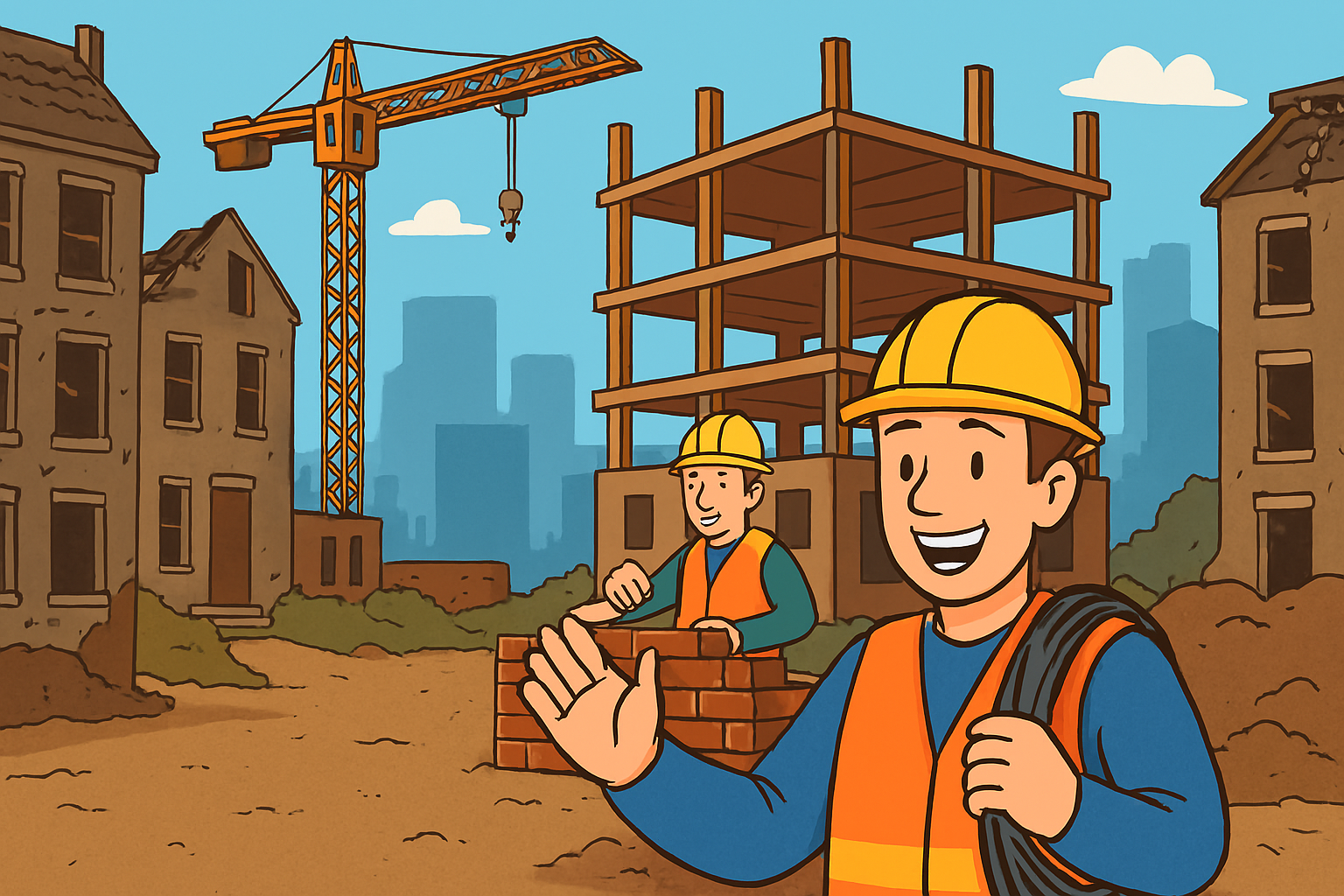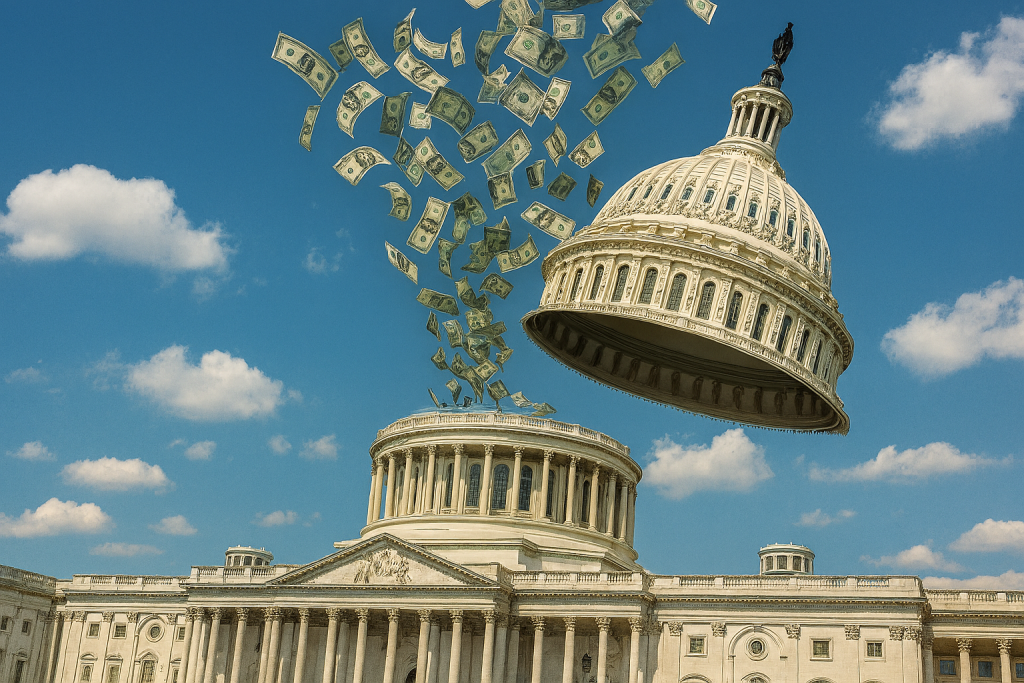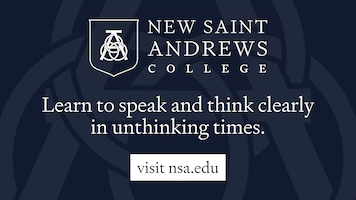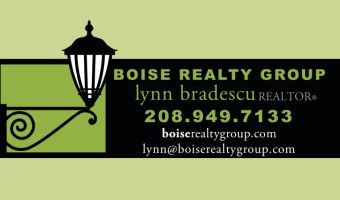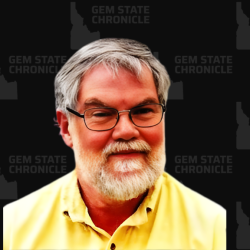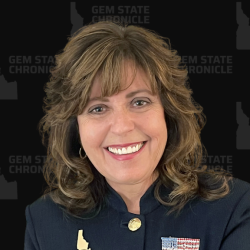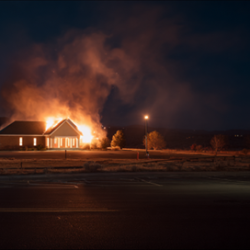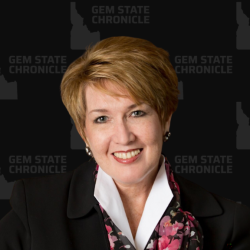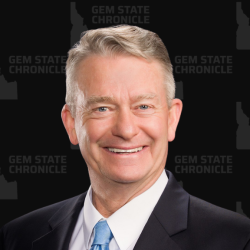Yesterday, I introduced the concept of urban renewal, created by the Legislature in the 1960s as a way for cities to improve deteriorated or blighted areas. Today, urban renewal districts (URDs) are used not only to fix up struggling sections of town, but also to streamline certain construction projects, such as Chobani’s plant in Twin Falls.
In the final days of the 2025 legislative session, lawmakers debated House Bill 436, which made several changes to Idaho’s urban renewal laws:
- Fire and ambulance district opt-out – Allows fire protection districts and ambulance service districts to withdraw from existing URDs as well as requiring them to opt-in to new ones.
- Conditions on opt-out – The option to opt out cannot occur if it would impair repayment of any outstanding bonds, notes, or other obligations of the urban renewal agency.
- Process for termination – Clarifies how a city can terminate an urban renewal district it previously created.
- Manufacturing-focused URDs – Allows URDs that consist solely of property owned or controlled by a single manufacturing project (and its affiliates) to extend beyond the normal 20-year limit, up to 40 years in total.
The bill runs more than 30 pages and makes numerous adjustments to existing law. I watched the full debate on both the House and Senate floors and heard a wide range of arguments on its various components.
Perhaps nobody spoke as forcefully in favor of the bill as Sen. Kelly Anthon. He explained that small towns in rural Idaho often lack the resources to handle the large corporate projects needed to provide jobs, and that urban renewal is a tremendous tool to make these projects possible. His argument presaged part of what I wrote yesterday, that single-employer URDs essentially allow a business to pay for its own infrastructure, such as water, sewer, and roads.
Regarding the new opt-out provisions for fire and ambulance districts, Anthon said he had heard from stakeholders on both sides. Cities and companies dependent on urban renewal were skeptical, while fire districts supported the change.
On the House side, Rep. Kent Marmon spoke in favor, saying urban renewal has evolved far beyond its original mission of revitalizing decaying areas, and that H436 was a good step toward reining it in. Rep. Rick Cheatum took the opposite view, calling urban renewal a necessary tool for local development. He moved to send the bill to the amending order to remove certain provisions, but that effort failed and the bill passed unchanged.
Rep. Lance Clow, whose district includes Chobani, supported the section allowing single-employer URDs to extend another 20 years for expansion. Rep. Cornel Rasor, on the other hand, echoed Marmon’s concern about mission creep, warning that urban renewal can enable corporatocracy and higher taxes. Both voted in favor of the bill for different reasons.
A real-world test of the bill came shortly after it was signed into law, when the Eagle Fire District voted to opt out of urban renewal to collect the full property taxes generated in those areas. At a special meeting on May 15, however, the Eagle Urban Renewal Agency (EURA) denied the resolution.
Josh Tanner, chairman of the Eagle Fire District Board of Commissioners, explained the district’s reasoning, but EURA chairman Mark Butler argued that withdrawal was unfair to the businesses in Eagle’s URDs, who had been promised a certain level of service.
In his capacity as state representative for District 14, Tanner voted in favor of H436.
Butler noted that, while he is skeptical of URDs overall, EURA has already invested hundreds of thousands of dollars in water lines and fire hydrants that benefit the district. He pointed out that EURA has only six years left on its term, after which the fire district will receive the full property tax revenue.
Butler also stated his belief that EURA had the legal right to deny the request. Attorney Todd Lakey—who, as a state senator for District 23, also voted in favor of H436—advised the board it could consider all contractual obligations and indebtedness when making its decision. He said EURA had no outstanding bonds, but did have $5.4 million in outstanding obligations, exceeding the $438,000 in annual property tax revenue at issue, and therefore could deny the request under the law.
The Eagle Fire commissioners disagreed with this interpretation and voted at their next meeting to authorize legal or other action in response to the denial. Commissioner Brad Pike, who is also Eagle’s mayor, abstained from the vote, which passed 2–0.
There are people on both sides of this issue that I respect and with whom I have positive relationships, so nothing I say here is meant to cast aspersions either way. Indeed, I don’t have a deep enough understanding of the issue to figure out which side is correct, which is exactly why we have judges and a legal process.
Here is the section of law in question:
Any fire protection district or ambulance service district may withdraw from being subject to an urban renewal revenue allocation financing provision under an urban renewal plan established by local governing body ordinance prior to July 1, 2025, if the urban renewal plan establishing the revenue allocation financing provision does not have any outstanding bonds, contractual obligations, or other indebtedness being funded by such revenue allocation financing provision greater than the amount of the revenue allocation proceeds that was attributable to the fire protection district or ambulance service district as of December 31 of the immediate prior tax year.
The debt clause exists because urban renewal agencies often take out bonds based on the future tax revenue a URD is expected to generate. For example, a major capital project—such as expanding sewer lines or renovating a decaying building—can require substantial upfront costs. The agency may issue a bond to finance the work, then repay it over time with taxes collected from properties in the district, which are now valued more highly than before.
Whatever comes out of this potential litigation will set a precedent for how the new law is applied, so urban renewal agencies and fire and ambulance districts across Idaho will be watching closely.
Urban renewal is just one component of a very complex tax system. As I mentioned yesterday, tax shifts occur when districts such as schools or fire departments are unable to levy property taxes on the increased valuations within URDs. Tax shifts happen in many other ways as well—consider the homeowner’s exemption. Every homeowner can deduct $125,000 from the taxable value of their primary residence, which shifts the tax burden onto businesses, rental homes, second homes, and other properties.
On the other hand, the exemption was indexed to inflation prior to 2016. Since it was capped at $125,000, homeowners have paid an increasingly larger share of property taxes than they would have under the old system. Based on inflation, the exemption could be worth upwards of $200,000 today. Back in 2020, BoiseDev’s Don Day wrote a good explainer on how the change affected the tax balance between residential and commercial properties.
The property tax relief brought about by House Bill 292 in 2023 causes a tax shift as well. Homeowners once again benefit from the use of surplus tax dollars to offset some property taxes.
On yet another hand, I received feedback to yesterday’s article noting that homes and businesses are assessed using different methods. This can lead to residential property values rising faster than commercial values, meaning homeowners shoulder a larger share of the tax burden year after year.
Suffice it to say, Idaho’s property tax system is complicated. Urban renewal was originally intended to combat blight, but its use has expanded significantly over the decades. H436 attempts to bring more balance to the system while also giving certain businesses more flexibility. Chobani, for example, can now fund its own expansion with an additional 20 years of urban renewal. At the same time, cities can more easily terminate URDs that have run their course or no longer serve the public.
I’ve only scratched the surface of urban renewal in these two articles. What do you think—is this a useful tool for cities to spur development, or a handout to big business? Does H436 restore balance, or tip the scales too far toward city councils or fire districts? Should the Legislature continue to modify laws regarding urban renewal, or even eliminate them entirely?
I’ve opened comments on Substack to all subscribers today, so let me know your thoughts!
Gem State Chronicle is a reader-supported publication. To receive new posts and support my work, consider becoming a free or paid subscriber.
About Brian Almon
Brian Almon is the Editor of the Gem State Chronicle. He also serves as Chairman of the District 14 Republican Party and is a trustee of the Eagle Public Library Board. He lives with his wife and five children in Eagle.


